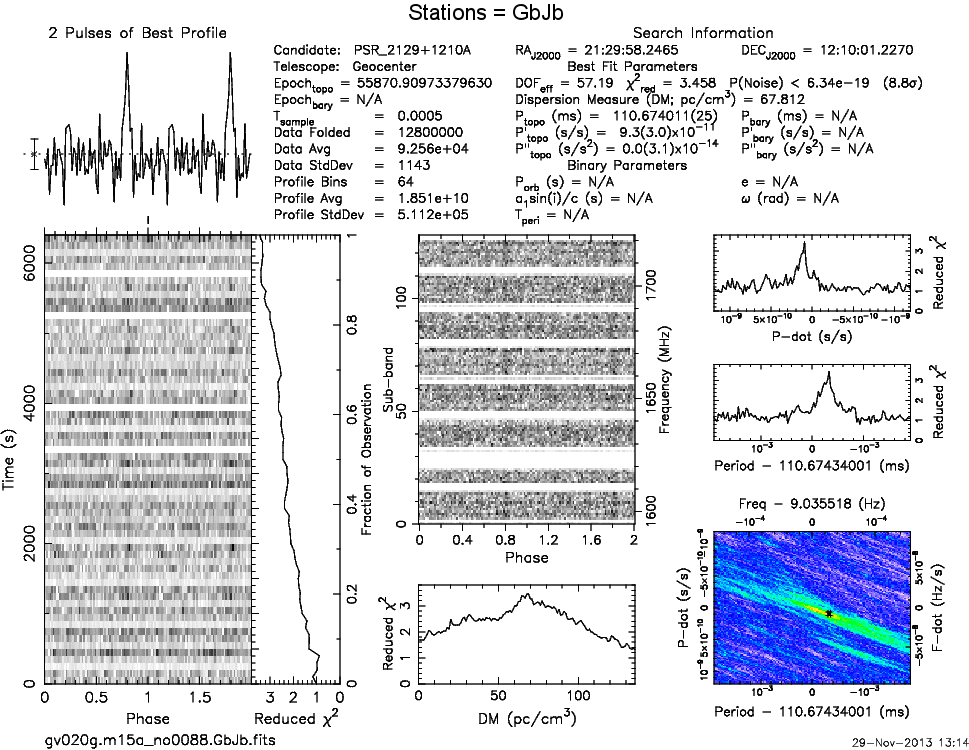Daily Image
14-03-2014M15A pulse profile with Earth-sized phased array
| Submitter: | Aard Keimpema, Mark Kettenis, Huib Jan van Langevelde, and Arpad Szomoru. |
| Description: | Recently a phased array mode has been developed for SFXC, the EVN software correlator. In this mode, the signals from all stations in an experiment are summed coherently rather than correlated. The main applications are time-domain pulsar studies such as pulsar timing, and pulsar searching experiments. Compared to single dish observations, the increased signal-to-noise obtained from the phased array mode will yield higher precision timing information, and allows for the detection of weaker pulsations. Before the signals from all stations can be summed coherently, phase and amplitude calibration solutions need to be provided. We obtain these by first correlating the experiment like a standard VLBI experiment. The usual calibration steps are then performed in the data reduction package AIPS. The results are exported back to the correlator where they are applied during the phasing up. The resulting time series are stored in the PSRFITS data format which is widely supported by pulsar toolkits such as SIGPROC and PRESTO. The field of view in a dataset obtained using the phased array mode is equal to the synthesized beam of the observing array, which in VLBI is very small. To make efficient pulsar searches possible, a multiple phase centre capability is present in the phased array mode. In this mode SFXC will, in a single pass, produce a search mode data set for each requested phase centre. Enabling multiple phase centers increases processing time by approximately 50% but each phase center comes at very little additional cost. In the animation we show a series of folded pulse profiles of pulsar M15A, which has a period of 110.66ms and DM=67. Each profile is the result of a coherent sum of a different collection of stations. The participating stations were Arecibo(Ar), Effelsberg(Ef), Greenbank(Gb), Jodrell Bank(Jb), Onsala(On), Torun(Tr), and single dish Westerbork(Wb1). The signal to noise in the resulting profile scales linearly with the total effective collecting area. The observational data that were used to produce these plots are courtesy of Franz Kirsten (Argelander Institut für Astronomie) and Wouter Vlemmings (Chalmers University of Technology / Onsala Space Observatory). |
| Copyright: | Aard Keimpema |
| Tweet |  |
